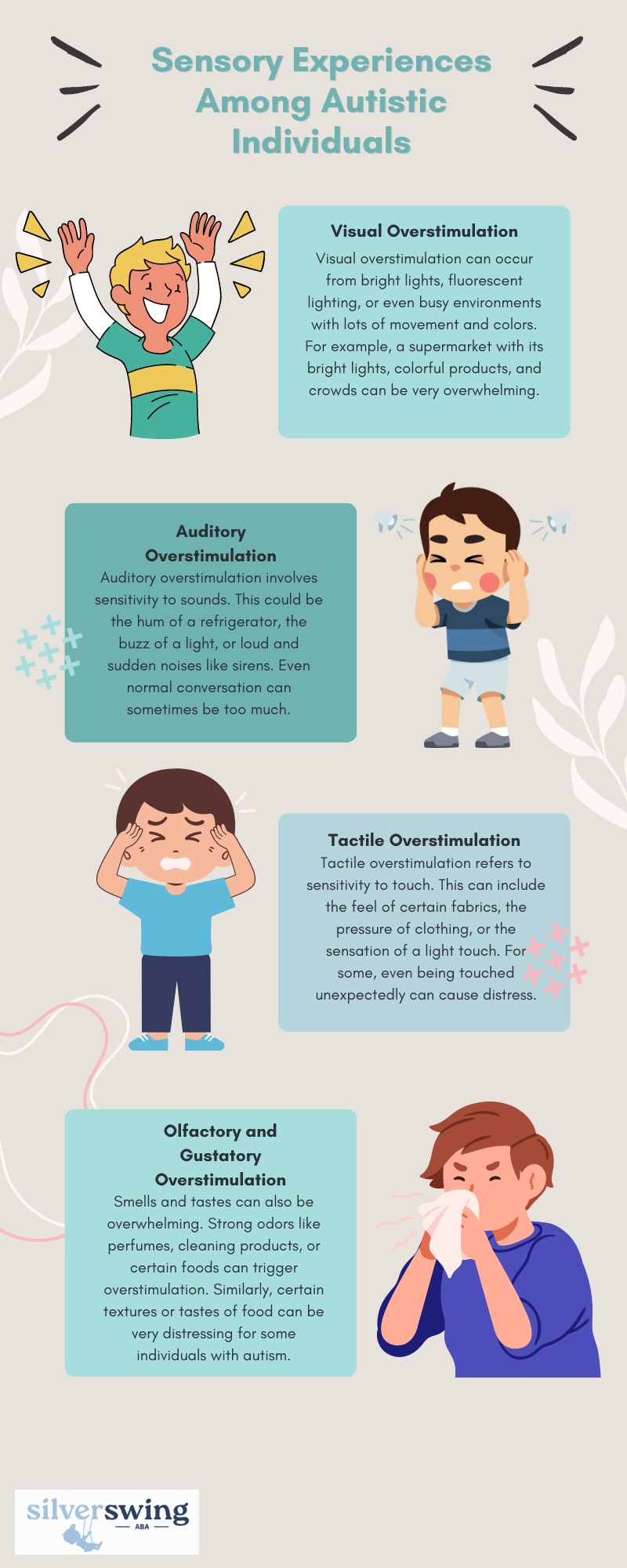Autism is a developmental disorder that affects how a person communicates and interacts with others. It is called a “spectrum” disorder because it encompasses a range of symptoms and skills. People with autism can have challenges in social interactions, repetitive behaviors, and communication.
One common issue faced by many individuals with autism is overstimulation. Understanding what overstimulation is, how it affects those with autism, and strategies to manage it can significantly improve the quality of life for people with autism and their families.

What is Overstimulation?
Overstimulation occurs when the sensory input from the environment becomes too intense or overwhelming for an individual to process. This can happen through any of the senses: sight, sound, touch, taste, and smell.
For people with autism, sensory experiences can be much more intense than for neurotypical individuals. A simple sound or bright light can become overwhelming and distressing.
Sensory Processing in Autism
Sensory processing refers to how the brain interprets and responds to sensory information. In individuals with autism, sensory processing can be different. Some may be hypersensitive (over-responsive) to stimuli, while others may be hyposensitive (under-responsive). For those who are hypersensitive, everyday sensory experiences can feel overwhelming.
Here are some examples:

Impact of Overstimulation on Individuals with Autism
Overstimulation can have significant impacts on the daily lives of individuals with autism. It can lead to feelings of anxiety, stress, and discomfort. In some cases, it may cause a person to shut down or have a meltdown.
A meltdown is an intense response to overwhelming stimuli, often involving crying, yelling, or other forms of distress. It is not the same as a tantrum, which is usually goal-oriented behavior in children. A meltdown is a reaction to feeling completely overwhelmed.
A shutdown, on the other hand, is a response where the person may withdraw, become non-responsive, or appear to be in a daze. It is a coping mechanism to escape the overwhelming stimuli.

Recognizing and Managing Overstimulation
Recognizing the signs of overstimulation in individuals with autism is crucial. Some common signs include:
- Covering ears or eyes
- Fidgeting or stimming (self-stimulatory behavior like hand-flapping or rocking)
- Increased anxiety or distress
- Avoidance of certain environments or activities
- Difficulty focusing or following instructions
Fortunately, there are various strategies that can help manage and reduce the impact of overstimulation for individuals with autism.
In addition, making changes to the environment can also significantly reduce overstimulation. This can include:
- Using soft lighting instead of bright or fluorescent lights
- Reducing background noise with soundproofing or noise-canceling headphones
- Creating quiet spaces where the individual can retreat when feeling overwhelmed
- Organizing and decluttering spaces to reduce visual clutter
And lastly, using sensory tools can be effective in helping individuals with autism manage overstimulation. These can include:
- Weighted blankets or vests to provide calming pressure
- Sensory toys like stress balls or fidget spinners
- Earplugs or noise-canceling headphones to reduce auditory input
- Sunglasses or hats to reduce visual input

Research and Studies on Autism Overstimulation
Several studies have explored the impact of sensory processing issues in autism and strategies to manage them.
A study found that sensory processing differences are prevalent in individuals with autism. The study highlighted that these sensory issues could significantly impact daily functioning and quality of life.
Research has also explored the effectiveness of sensory interventions. A systematic review in examined various sensory-based interventions for children with autism. The review found that interventions like weighted vests, sensory integration therapy, and sensory diets showed positive outcomes in reducing sensory-related behaviors.
Overstimulation is a significant challenge for many individuals with autism. It can impact their daily lives, causing stress and discomfort. However, with understanding and appropriate strategies, it is possible to manage and reduce the effects of overstimulation.
Environmental modifications, sensory tools, predictable routines, and open communication are essential in creating a supportive environment. Ongoing research and personal experiences continue to provide valuable insights into effective ways to help individuals with autism navigate their sensory world.




